The Great Smoky Mountains rise like a misty blue beacon, beckoning adventurers and nature lovers to their lush forests and rugged peaks. From cascading waterfalls to rolling hills dotted with wildflowers, this breathtaking US national park is a symphony of sights and sounds waiting to be explored. Whether you prefer to hike, camp, or simply take in the killer views, Great Smoky Mountains National Park offers endless opportunities for adventure. Step into this wild and wondrous land and immerse yourself in its natural beauty, rich history, and one-of-a-kind spirit.
Guide to Great Smoky Mountains National Park
Where is Great Smoky Mountains National Park?
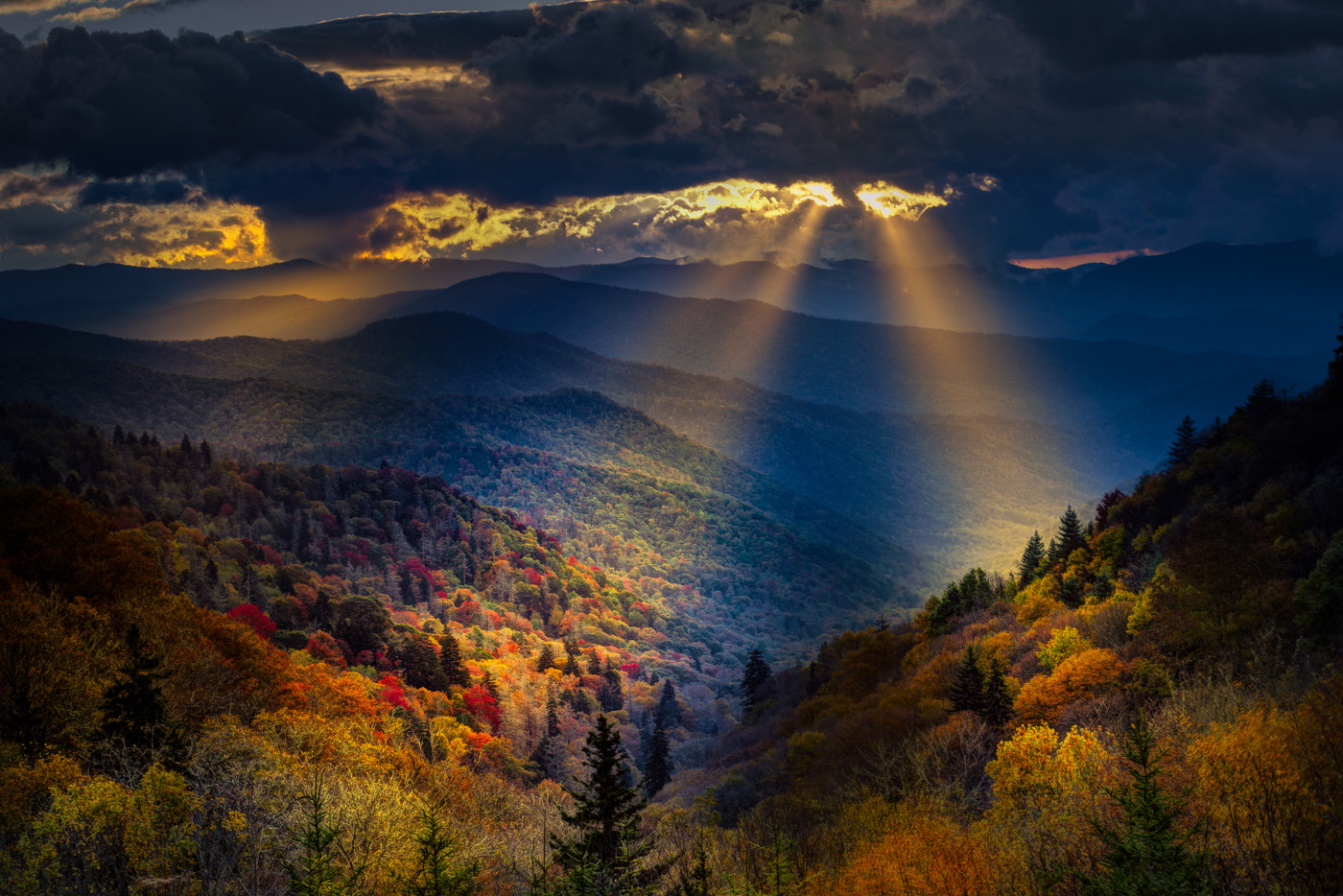
Great Smoky Mountains National Park is located in the southern Appalachian Mountains, straddling the border between Tennessee and North Carolina. The park encompasses over 522,000 acres of rolling hills, lush forests, and scenic vistas, making it one of the largest protected areas in the Eastern United States.
Facts About Great Smoky Mountain National Park
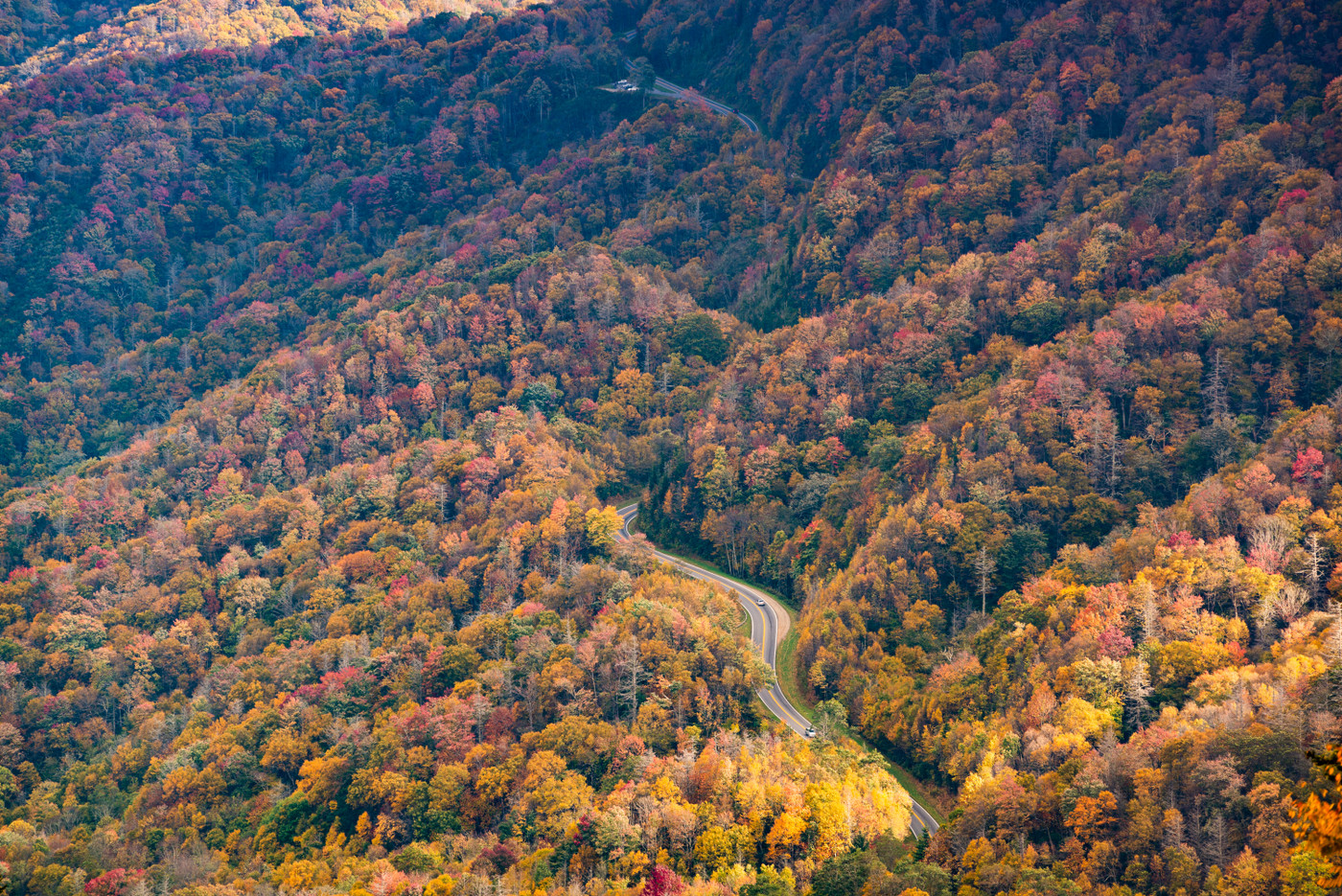
- Great Smoky Mountains National Park is the most visited in the national park system. It brings in a staggering 8-10 million visitors each year.
- Great Smoky Mountains National Park straddles the ridge line of the Great Smoky Mountains, which are a part of the Appalachian Mountain chain.
- More than 70 historic structures – from churches and schools to mills and farm buildings – have been preserved in the park. This collection is the largest of its kind in the East.
- The Great Smoky Mountains are the “Salamander Capital of the World,” home to 24 species of lungless salamanders.
- Along Newfound Gap Road, you’ll find the Rockefeller Memorial. It stands where President Franklin D. Roosevelt dedicated the national park in 1940.
- Due to its mostly-accessible trails and family-friendly nature, Great Smoky Mountains National park is one of the best national parks for beginners.
Indigenous History in Smoky Mountain National Park
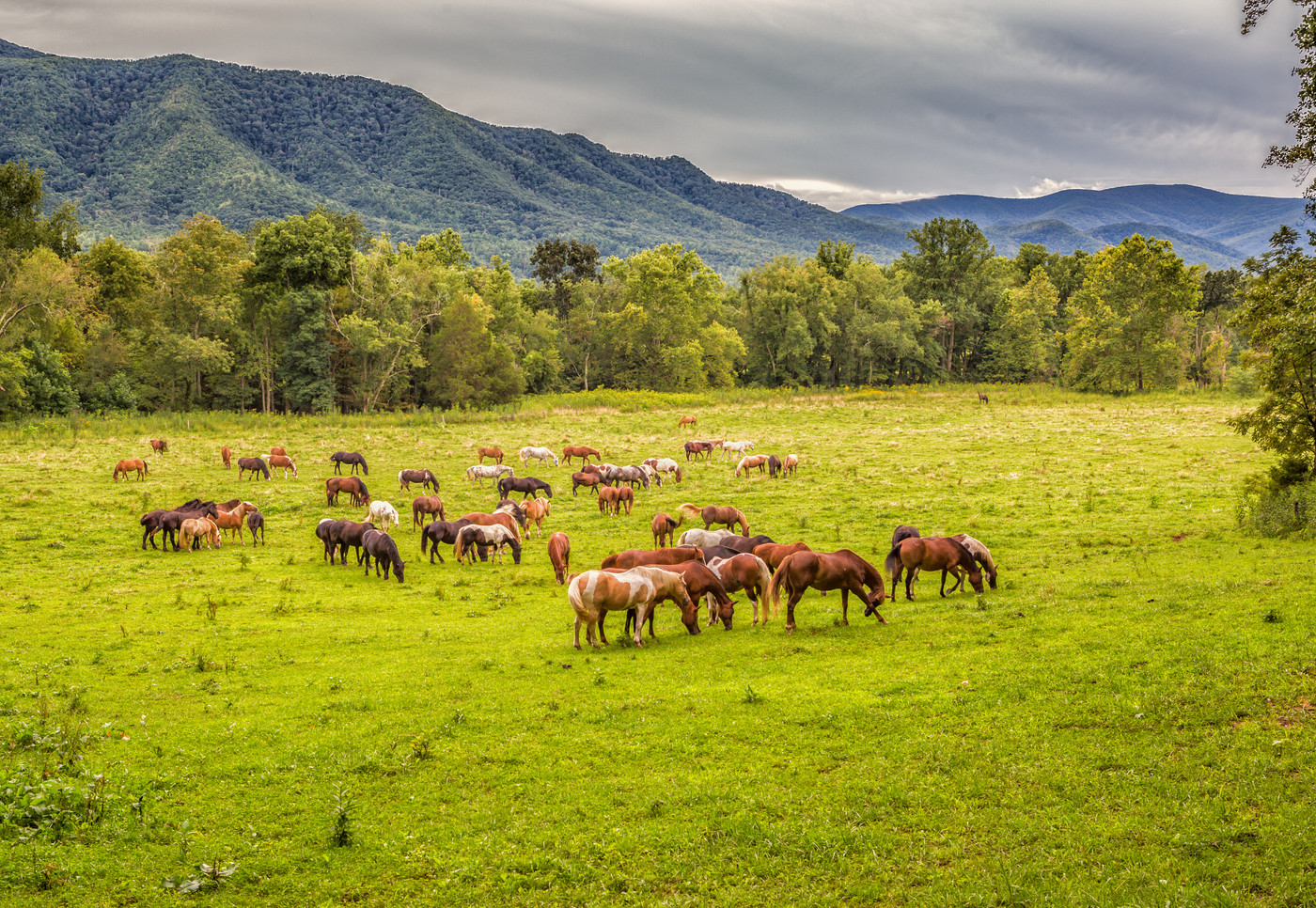
Great Smoky Mountains National Park holds a rich history of indigenous culture and presence, dating back thousands of years. The park is home to several indigenous tribes, including the Great Smoky Mountains Cherokee, who have lived in the area for centuries and continue to maintain their cultural heritage and traditions. Visitors can learn about the history and culture of the indigenous tribes through guided tours, exhibits, and cultural events.
Great Smoky Mountains National Park Weather

The weather in Great Smoky Mountains National Park varies significantly depending on the season and elevation. Summer temperatures can reach the high 80s°F in the valleys and the 60s°F at higher elevations, while winter temperatures can drop below freezing, with occasional snow and ice. Spring and fall offer mild temperatures and clear skies, making it a popular time for hiking and outdoor activities. The park also experiences regular rain and fog throughout the year, especially in the higher elevations. Because conditions can change rapidly in them mountains, it’s important to check the weather forecast and come prepared with appropriate clothing and gear.
Great Smoky Mountains National Park Hours

Great Smoky Mountains National Park is open 24 hours a day, 365 days a year. However, some facilities within the park, like campgrounds, visitor centers, and picnic areas, have specific operating hours. Some roads within the park may also close seasonally due to weather conditions. It’s recommended to check the park’s website for up-to-date information on Great Smoky Mountains’ facilities and road closures.
Getting to Great Smoky Mountains National Park

Great Smoky Mountains National Park can be accessed from several nearby cities, including Knoxville and Asheville. The closest major airport is McGhee Tyson Airport (TYS) in Knoxville, Tennessee, which is about an hour drive from the park. From Asheville, North Carolina, the park is about a two-hour drive. Visitors can also take advantage of public transportation options, like the Knoxville Trolley, which offers rides from Knoxville to several areas within the park. Once inside, visitors can explore by car, bicycle, or on foot along the many scenic roads and trails.
Great Smoky Mountains Entrance Fee
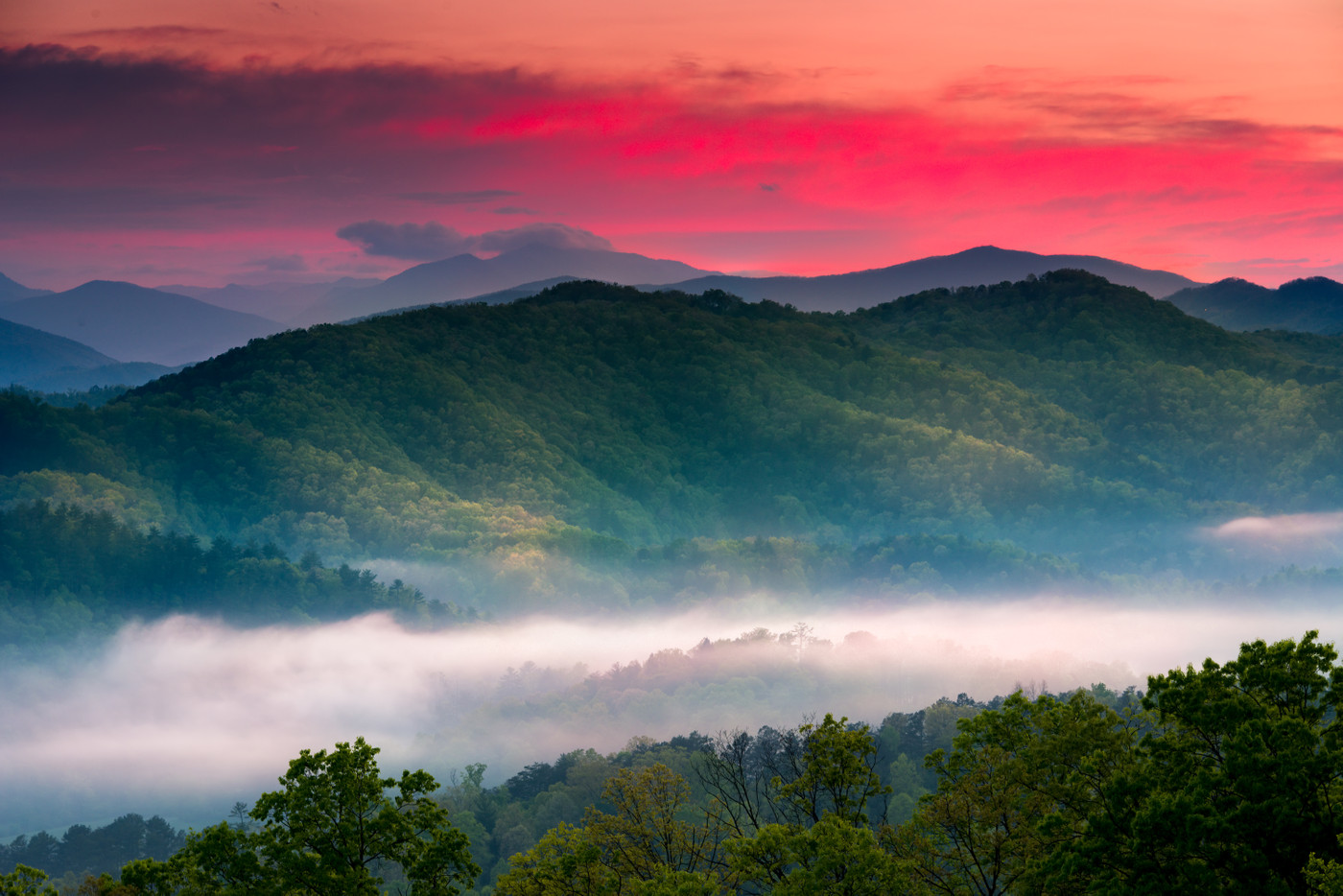
The entrance fee to Great Smoky Mountains National Park is $35 per vehicle and is valid for 7 days. Individual visitors pay $20 per person and the fee is also valid for 7 days. There are also an assortment of additional fees for specific activities like camping ($14 to $23 per night), backcountry permits ($4 per person per night), and cabin rentals ($125 to $350 per night). Activities like picnicking, hiking, and wildlife viewing are always free and accessible to all. Visitors should check the park’s website for the most up-to-date information on fees and cost of services. If you are planning to visit more US National Parks in a given year, consider getting the America the Beautiful Pass for unlimited access to all parks for a year for $80.
Sugarlands Visitor Center

Sugarlands Visitor Center, located in Great Smoky Mountains National Park, is a great first stop for tourists exploring the park. At Sugarlands, visitors can learn about the park’s history, geology, and wildlife through interactive exhibits, educational videos, and ranger-led programs. Park rangers are available to answer questions, provide information on current conditions, and help visitors plan their trip. A bookstore, restroom, and picnic area can also be found here.
Clingmans Dome Visitor Center
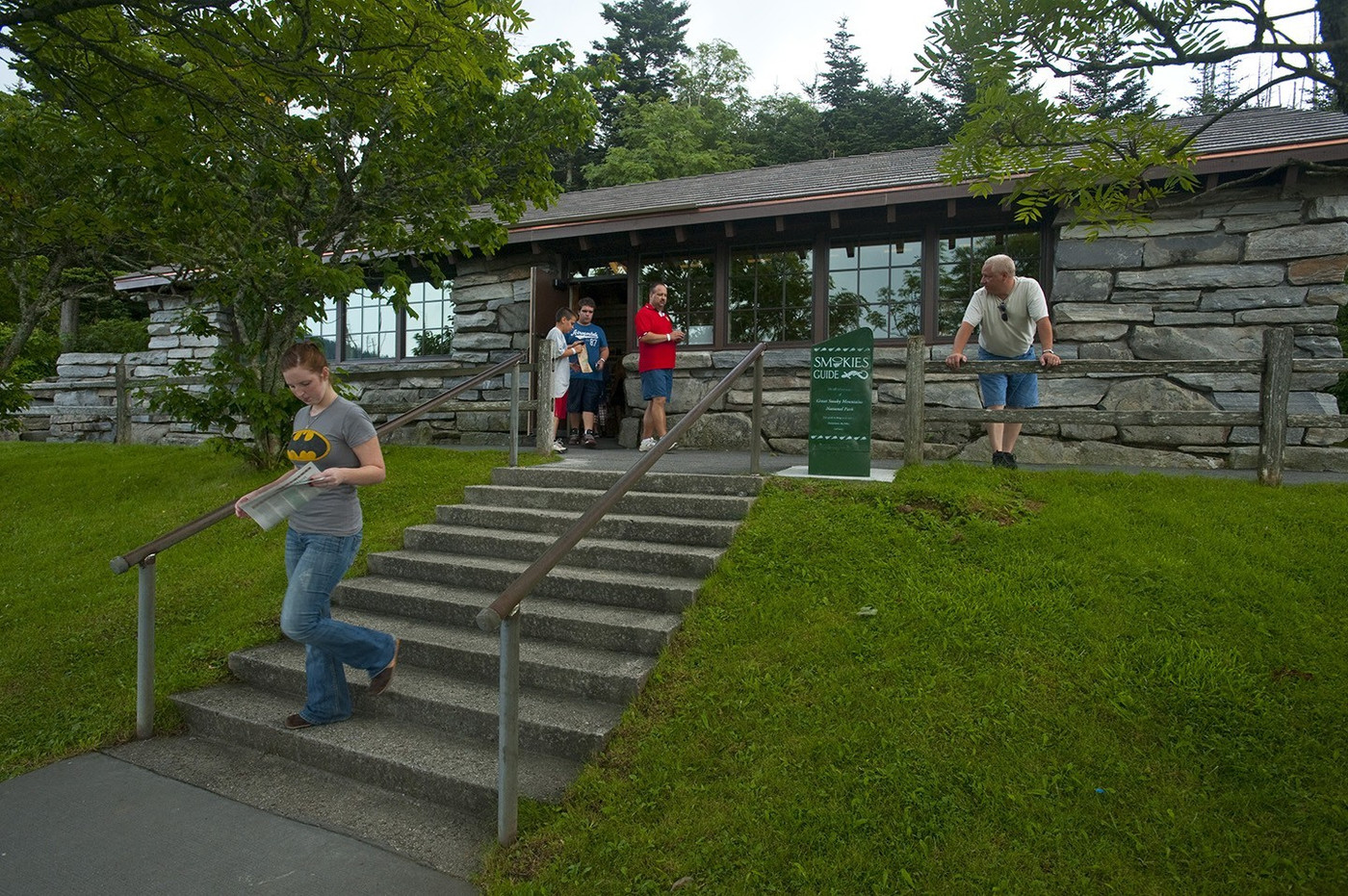
Clingmans Dome Visitor Center presents stunning panoramic views of the mountains, including Clingmans Dome itself, the highest peak in Tennessee. The center is equipped with exhibits, displays, and information about the park’s history, geology, wildlife, and hiking trails. Park rangers are available to answer questions and provide advice on the best ways to explore the area. In addition to wow-worthy views, the center has restrooms, water fountains, and a gift shop, making it a super convenient stop.
Oconaluftee Visitor Center

The Oconaluftee Visitor Center is located near the southern entrance to Great Smoky Mountains National Park. The center is staffed by knowledgeable park rangers who can provide information about hiking trails, campgrounds, and other recreational activities in the area. Visitors can also purchase park merchandise, such as souvenirs and books, at the center’s gift shop.
Cades Cove Visitor Center

The Cades Cove Visitor Center is located in the heart of Cades Cove in Great Smoky Mountains National Park. This historic site features exhibits on the natural and cultural history of the area, including the history of the settlers who once lived in the cove. Visitors can learn about the history of the park, the wildlife, and the ecosystem of the area.
State and National Parks Near the Great Smoky Mountains
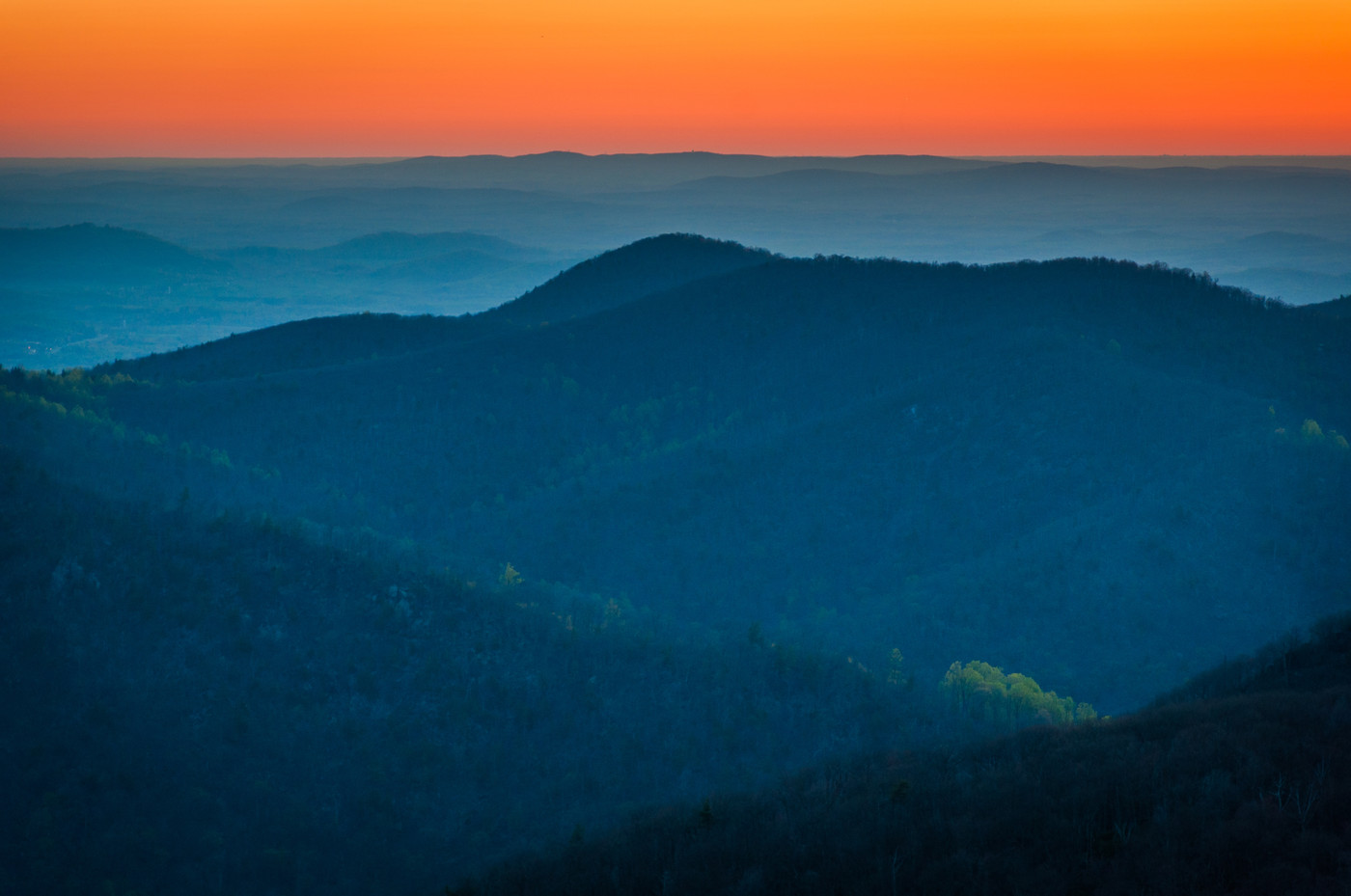
Think you’ve seen enough of Great Smoky Mountains National Park? Just wait, there’s more. The smokies are surrounded by hundreds of stunning state and national parks, offering visitors the opportunity to explore a diverse range of landscapes and natural wonders.
Just to the north is the Cumberland Gap National Historical Park, which showcases the rich history of the region through its preserved landscape, as well as the famous trail that once served as a major thoroughfare for settlers in the 18th and 19th centuries.
To the south, the Blue Ridge Parkway offers visitors breathtaking views of the Blue Ridge Mountains, including numerous overlooks, hiking trails, and camping sites.
Last but not least, to the northeast we have Shenandoah National Park in Virginia. This mountainous national park offers up 96,000-acres of craggy outcrops, rock bridges, cascading falls, and dense forests just 5 hours from the Smokies.
Hiking in the Great Smoky Mountains National Park
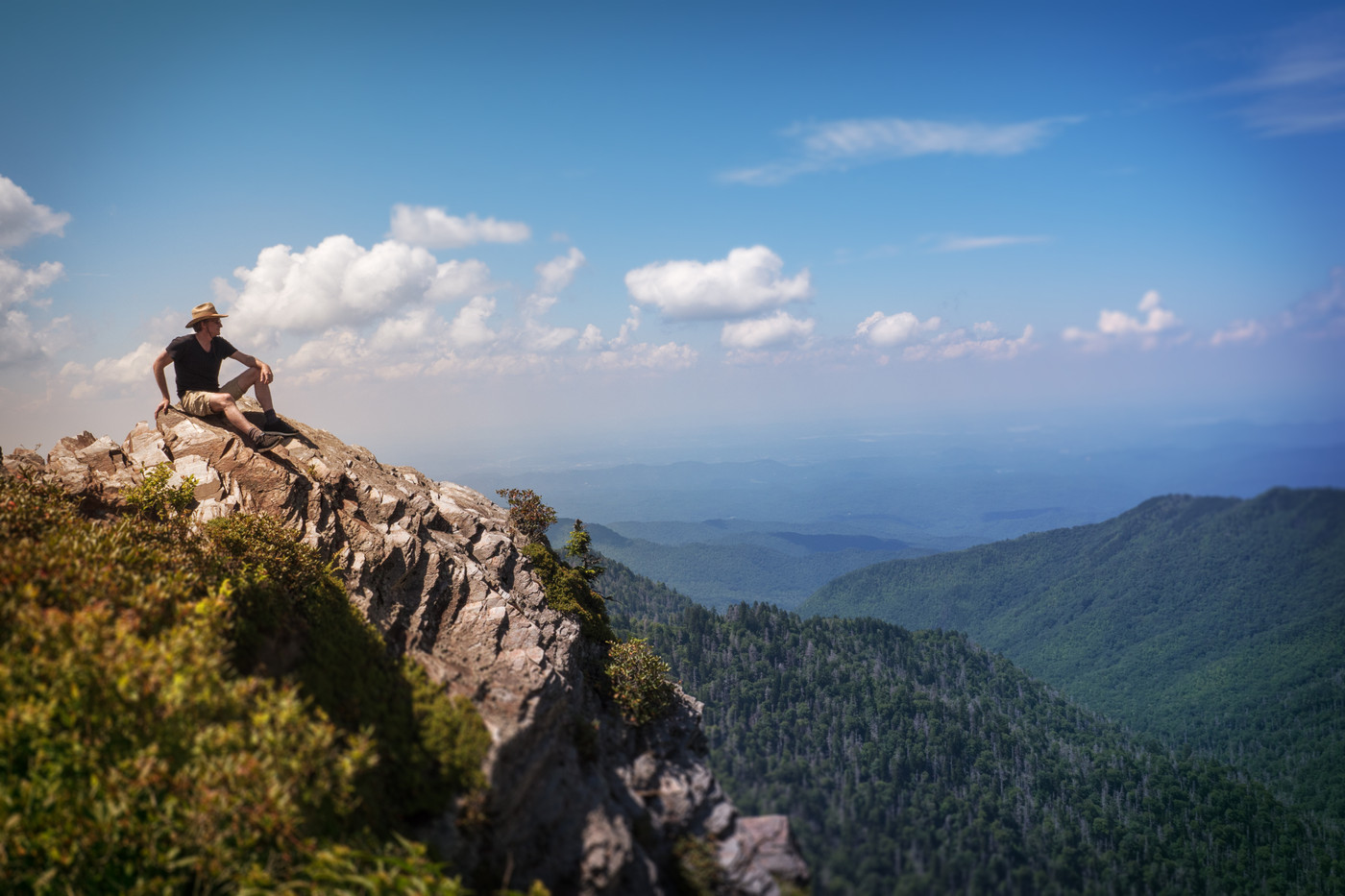
With over 800 miles of trails ranging from easy nature walks to challenging backcountry treks, there’s a trail for every type of hiker in the park. With proper planning, visitors can safely explore the beauty and diversity of the Great Smoky Mountains on foot. Here’s a list of 15 of our favorite hiking trails in Great Smoky Mountains National Park:
Easy, perfect for families:
- Laurel Falls Trail (2.4 mile out-and-back)
- Gatlinburg Trail (3.9 mile out-and-back)
- Cataract Falls (1.1 mile out-and-back)
- Mouse Creek Falls via Big Creek Trail (4 mile out-and-back)
- Deep Creek Waterfall Loop (2.4 mile loop)
Moderate, fairly strenuous:
- Rainbow Falls Trail (5.1 mile out-and-back)
- Clingmans Dome Observation Tower Trail (1.2 mile out-and-back)
- Abrams Falls Trail (5.5 mile out-and-back)
- Andrews Bald Trail (3.6 mile out-and-back)
- Appalachian Trail to Icewater Spring Shelter (6 mile out-and-back)
Hard, experience recommended:
- Alum Cave Trail to Mount LeConte (10.9 mile out-and-back)
- Chimney Tops Trail (4.4 mile out-and-back)
- Icewater Spring via Appalachian Trail (6.2 mile out-and-back)
- Mount LeConte via Rainbow Falls Trail (13 mile out-and-back)
- Brushy Mountain Trail (11.2 mile out-and-back)
Lodging Near Great Smoky Mountains National Park

Great Smoky Mountains National Park is the most-visited national park in the US, attracting millions of tourists each year. With its breathtaking scenery, scenic hiking trails, and rich history, it’s no wonder that so many people choose to vacation in the Smokies. Depending on when you visit, finding the right accommodation can be a little tricky. Whether you’re traveling solo, with family, or in a group, we’ve found the best places to stay in and around the Great Smoky Mountains.
Camping in Great Smoky Mountains National Park
Camping in and around Great Smoky Mountains National Park is a popular way to experience the unique beauty of the Smokies. With over 100 developed campgrounds and thousands of backcountry sites, visitors have endless options to choose from. The park’s unique mix of rolling hills, lush forests, and pristine streams create a peaceful and serene environment for all campers. Whether you are an experienced camper or a first-timer, camping in the Great Smoky Mountains is an unforgettable experience.
Get more ideas from leah on
Hotels Near Great Smoky Mountains National Park
With a wide range of options from budget-friendly motels to luxury resorts, there is a hotel to fit every traveler’s needs and budget, here. Whether you’re looking for a hotel with easy access to park attractions, or a peaceful retreat surrounded by natural beauty, we’ve got you covered.
Get more ideas from leah on
Great Smoky Mountains Park Tours

Explore the beauty of Great Smoky Mountains National Park like never before with a guided tour! The park offers a wide range of tours, including scenic drives, guided hikes, horseback rides, and much more. Whether you’re interested in learning about the park’s unique history and geology, or simply want to take in the stunning views, a tour is the perfect way to make the most of your visit. From scenic drives along the park’s picturesque roads to hidden waterfalls and scenic overlooks, the park’s tours offer a unique and immersive experience.
The Best Things to Do Near Great Smoky Mountains National Park
Newfound Gap
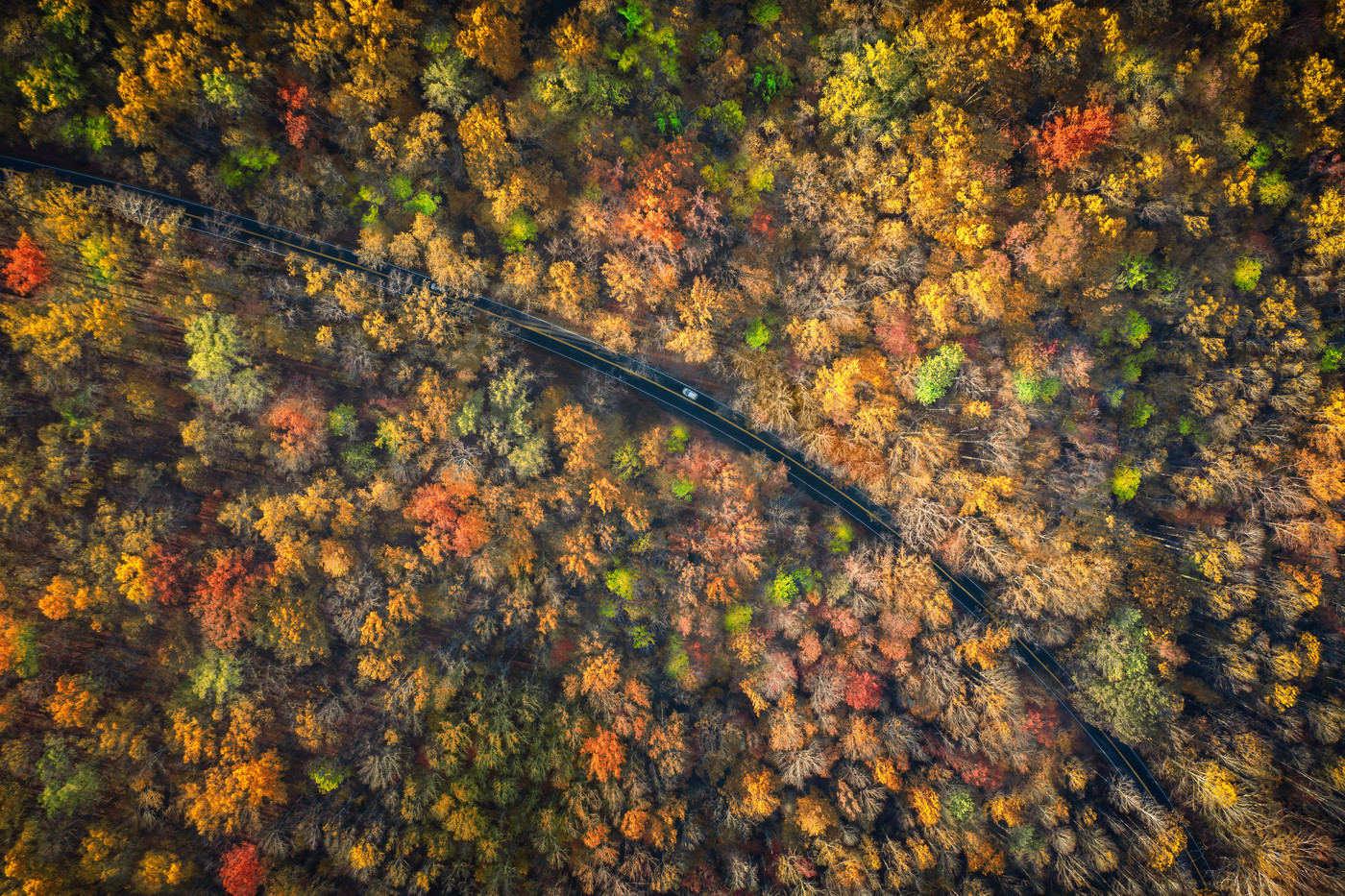
The Newfound Gap is a scenic drive through Great Smoky Mountains National Park, offering breathtaking views of the park’s natural beauty. The road winds through lush forests, past scenic overlooks, and offers views of the park’s towering peaks. Along the way, visitors can stop at several pull-off areas to take in the views or explore nearby trails. The road also passes by several historical and cultural sites, including the Appalachian Trail and the Rockefeller Memorial. The road is open year-round, but some sections may be closed during inclement weather.
Roaring Fork Motor Nature Trail
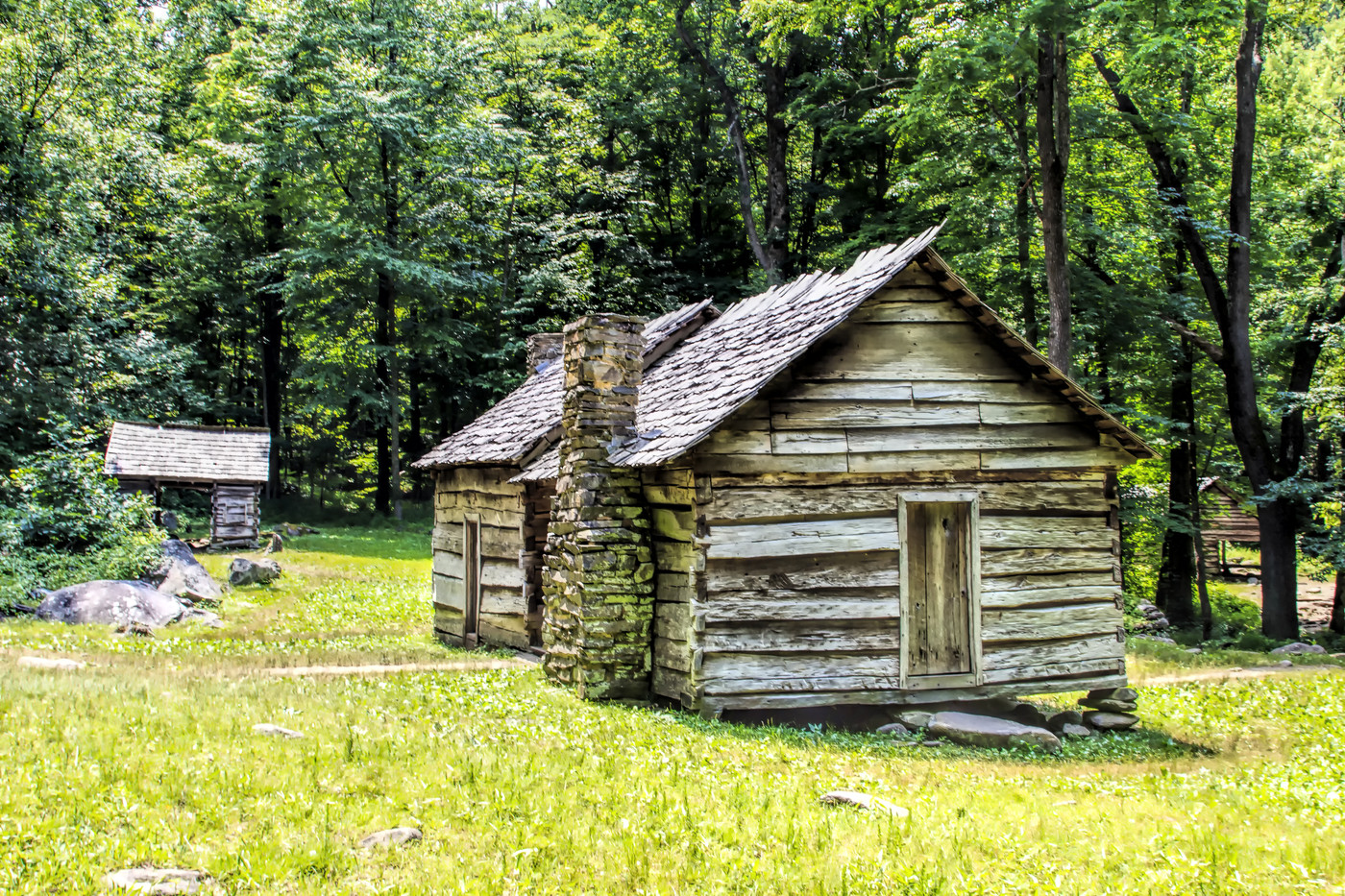
Roaring Fork Motor Nature Trail is a scenic drive that offers breathtaking views of the park’s rushing streams, mature forests, and historic buildings. Visitors should expect a slow-paced, winding road with multiple pull-off areas for taking in the views, hiking, and exploring. The trail features several short hikes to waterfalls and historic sites, including the Elijah Oliver Place, a well-preserved 19th-century homestead. Visitors should wear comfortable footwear for hiking, bring a camera to capture the scenery, and be mindful of park rules and regulations, including respecting wildlife.
Grotto Falls
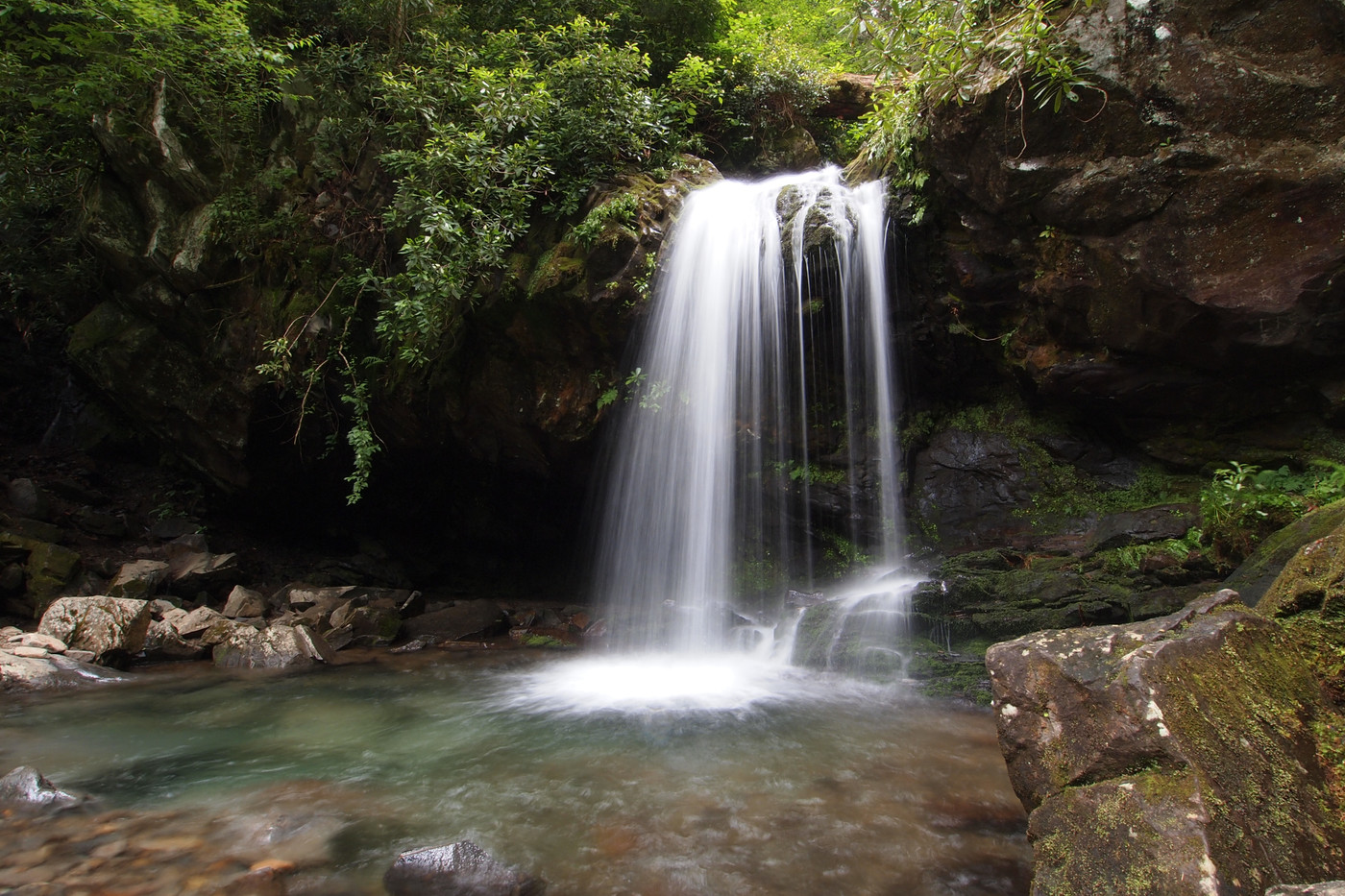
Grotto Falls is known for its unique setting and accessibility. The waterfall is located on the Trillium Gap Trail, a 2.6-mile round trip hike that starts at the Roaring Fork Motor Nature Trail. The trail is relatively easy and provides a peaceful hike through the lush forest of the Smokies. The highlight of the trail is Grotto Falls, a 25-foot tall waterfall that tumbles into a small cave-like area. Visitors can walk behind the falls for a unique view, making it a one-of-a-kind destination in the Smokies.
Rainbow Falls
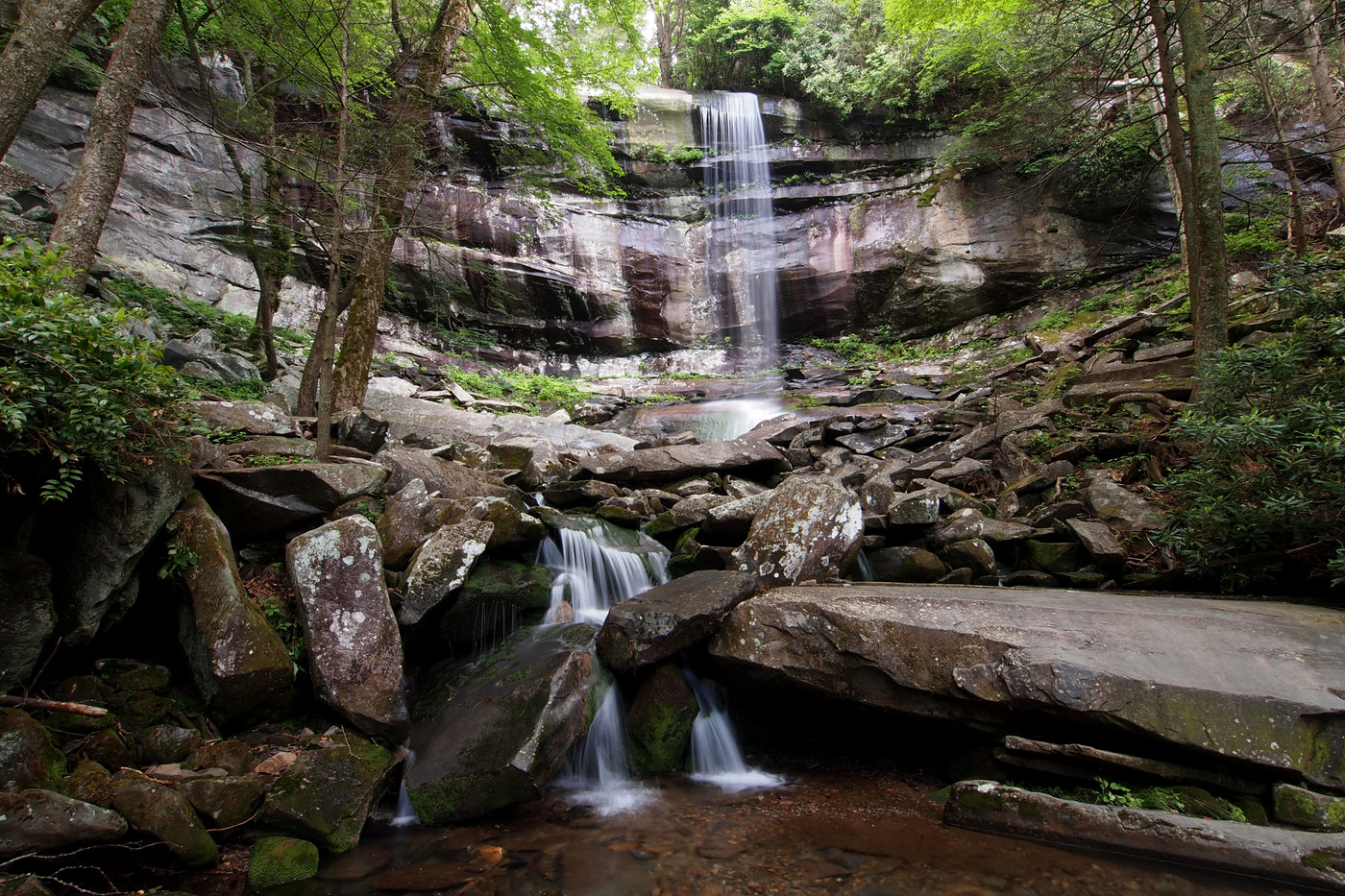
Rainbow Falls is a picturesque waterfall located in Great Smoky Mountains National Park. What’s it known for? Its vibrant rainbows, of course. The waterfall is located on the Rainbow Falls Trail, a 5.4-mile round trip hike that starts at the Roaring Fork Motor Nature Trail. The trail offers a strenuous hike through the lush forest of the Smokies, and visitors can see several other cascading waterfalls along the way. When visitors reach Rainbow Falls, they’ll be greeted by a breathtaking 80-foot tall waterfall that plunges into a deep pool of water below.
Alum Cave Trail

The Alum Cave Trail is a popular hike in Great Smoky Mountains National Park. The trail starts at the Newfound Gap Parking Area and leads to the top of Mount Le Conte, offering views of the surrounding landscape along the way. The trail is strenuous, so it’s important to bring plenty of water, snacks, and appropriate footwear. Visitors should also be prepared for a full day hike, as the round trip can take anywhere from 5-8 hours. Hikers should be mindful of the weather, as conditions can change quickly in the mountains. With its breathtaking views and unique geology, the Alum Cave Trail is a must-visit for anyone looking for rewarding hike.
Cades Cove
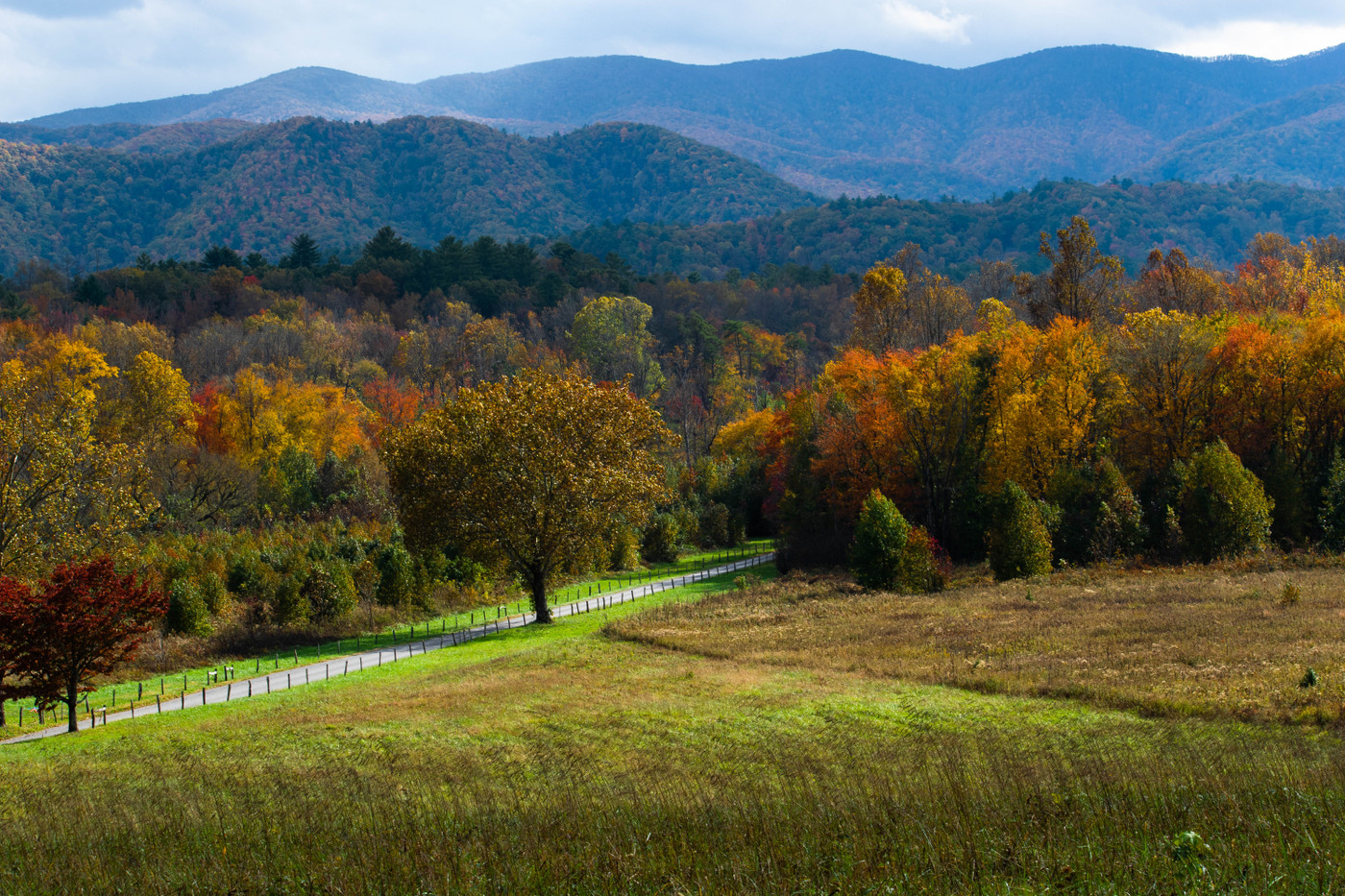
Cades Cove is a lush, green valley surrounded by the majestic peaks of the Smoky Mountains. Visitors can explore the valley by taking a scenic drive or by hiking one of the many trails nearby. Along the way, visitors can see a variety of historic structures, including log cabins and churches, that offer a glimpse into life in the Smokies in the 19th century. The valley is also home to an abundance of wildlife, including deer, turkey, and black bear.
Clingmans Dome

Clingmans Dome is a must-visit destination for anyone visiting Great Smoky Mountains National Park. Located at the highest point in Tennessee, Clingmans Dome offers visitors breathtaking views of the surrounding landscape. The hike to the top of the Dome is a super unique experience, taking visitors onto a clear observation tower at the summit. Along the way, you can see a variety of vegetation and wildlife, including a variety of bird species. At the summit, visitors can take in panoramic views of the park stretching as far as the eye can see.
Chimney Tops
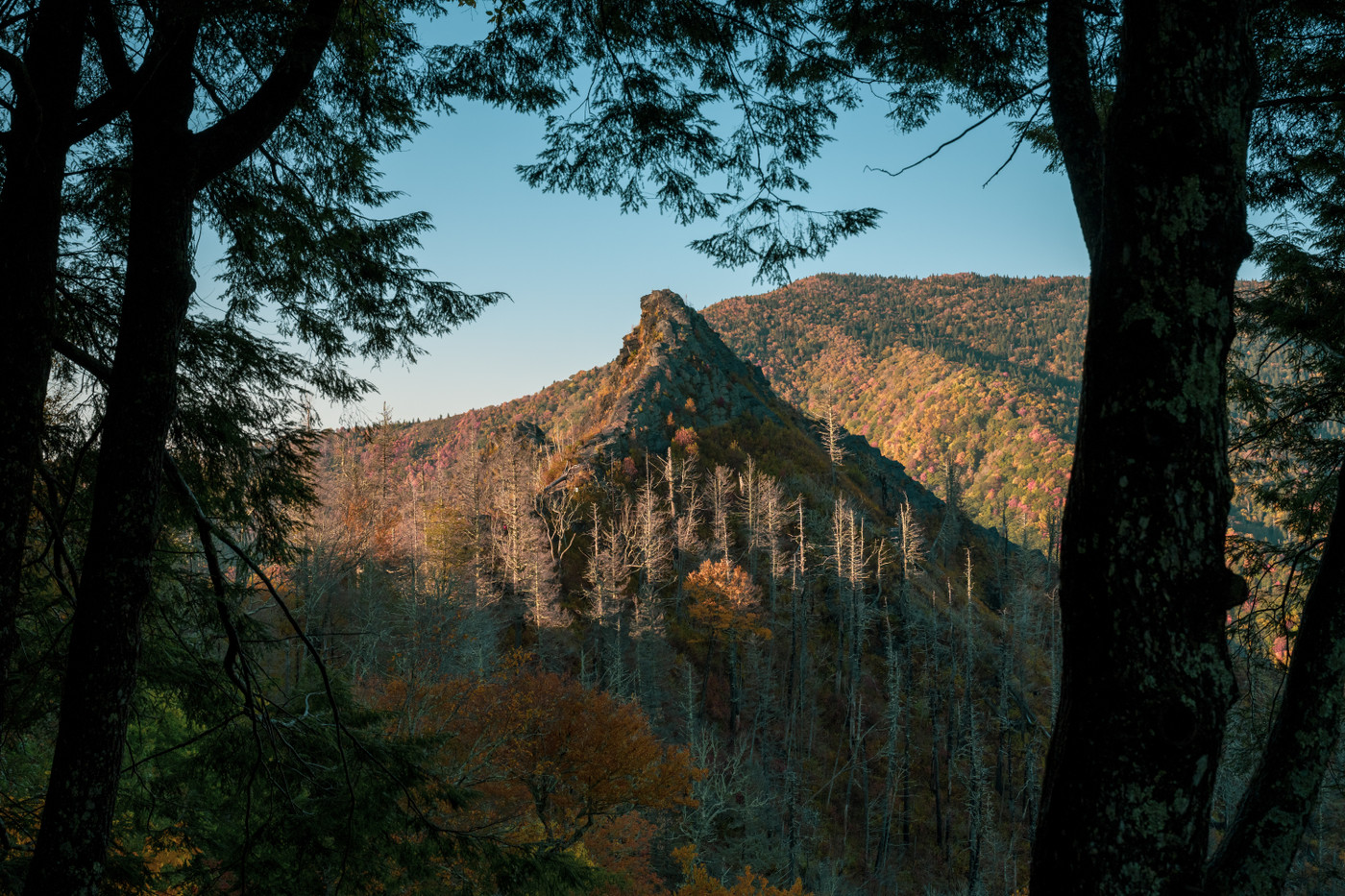
The Chimney Tops trail in Great Smoky Mountains National Park is a popular destination for visitors looking for a challenging but rewarding hike. The trail, which is 2 miles round trip, is steep and rocky, but offers a unique experience for those up for a physically demanding hike.
Ripley’s Aquarium of the Smokies

Ripley’s Aquarium of the Smokies is a popular attraction located in Gatlinburg, Tennessee, near Great Smoky Mountains National Park. The aquarium offers visitors an up-close and interactive experience with over 10,000 exotic sea creatures, including sharks, stingrays, and colorful tropical fish. Highlights of the aquarium include the 330-foot-long Ocean Realm Tunnel, the Penguin Playhouse, and the Touch-A-Ray Bay. Visitors can also participate in several interactive programs, such as the Dive with the Sharks experience and the Sleep with the Sharks overnight adventure.
Gatlinburg SkyLift Park
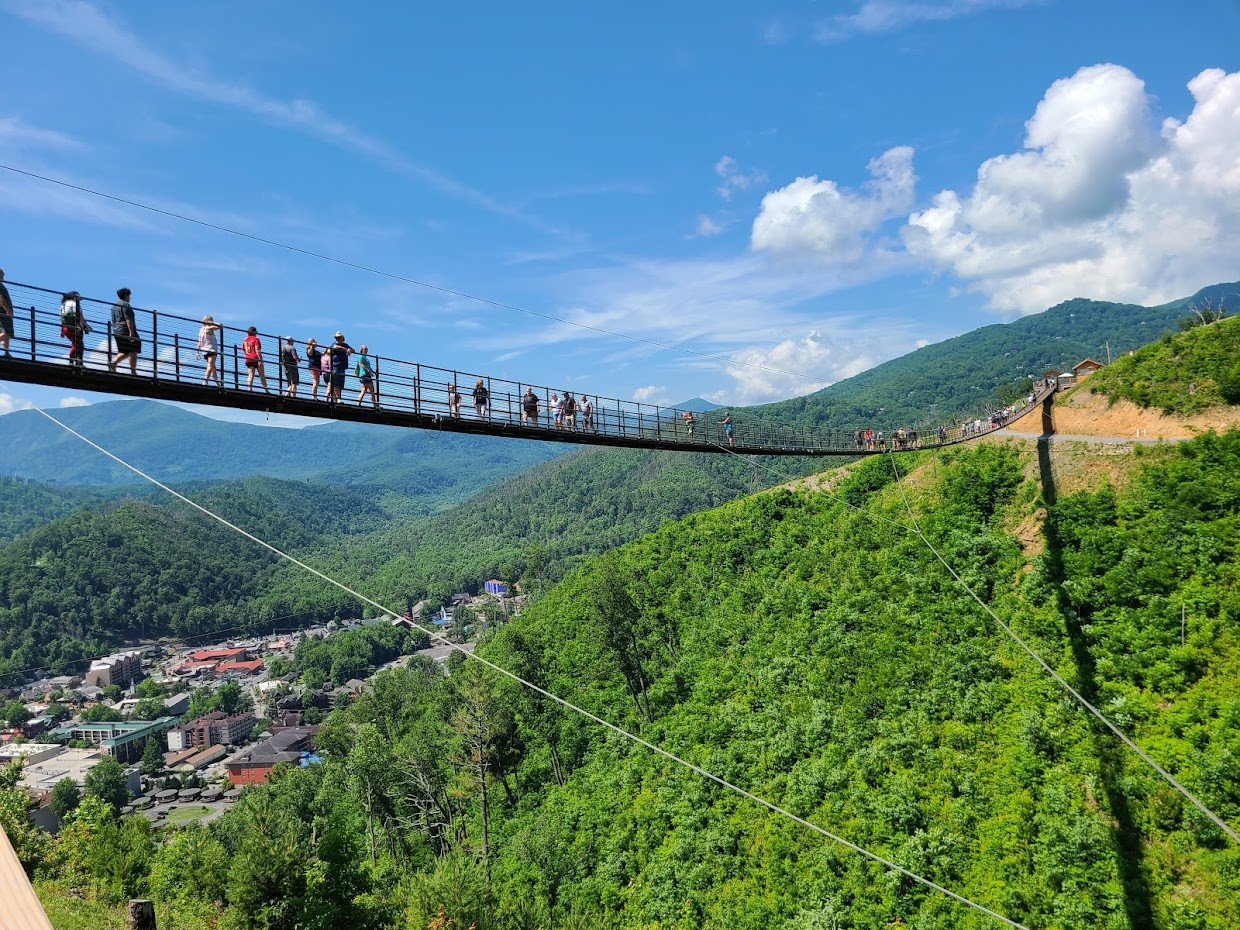
Gatlinburg SkyLift Park is a popular tourist destination located in Gatlinburg, Tennessee, near Great Smoky Mountains National Park. Visitors can experience stunning views of the surrounding mountains and valleys while riding the Gatlinburg SkyBridge: the longest pedestrian suspension bridge in North America. In addition to the SkyBridge, the park also includes a chairlift ride to the top of Crockett Mountain. At the top is a SkyDeck, SkyCenter, and SkyTrail, all offering unique and interactive experiences.
Mount Le Conte
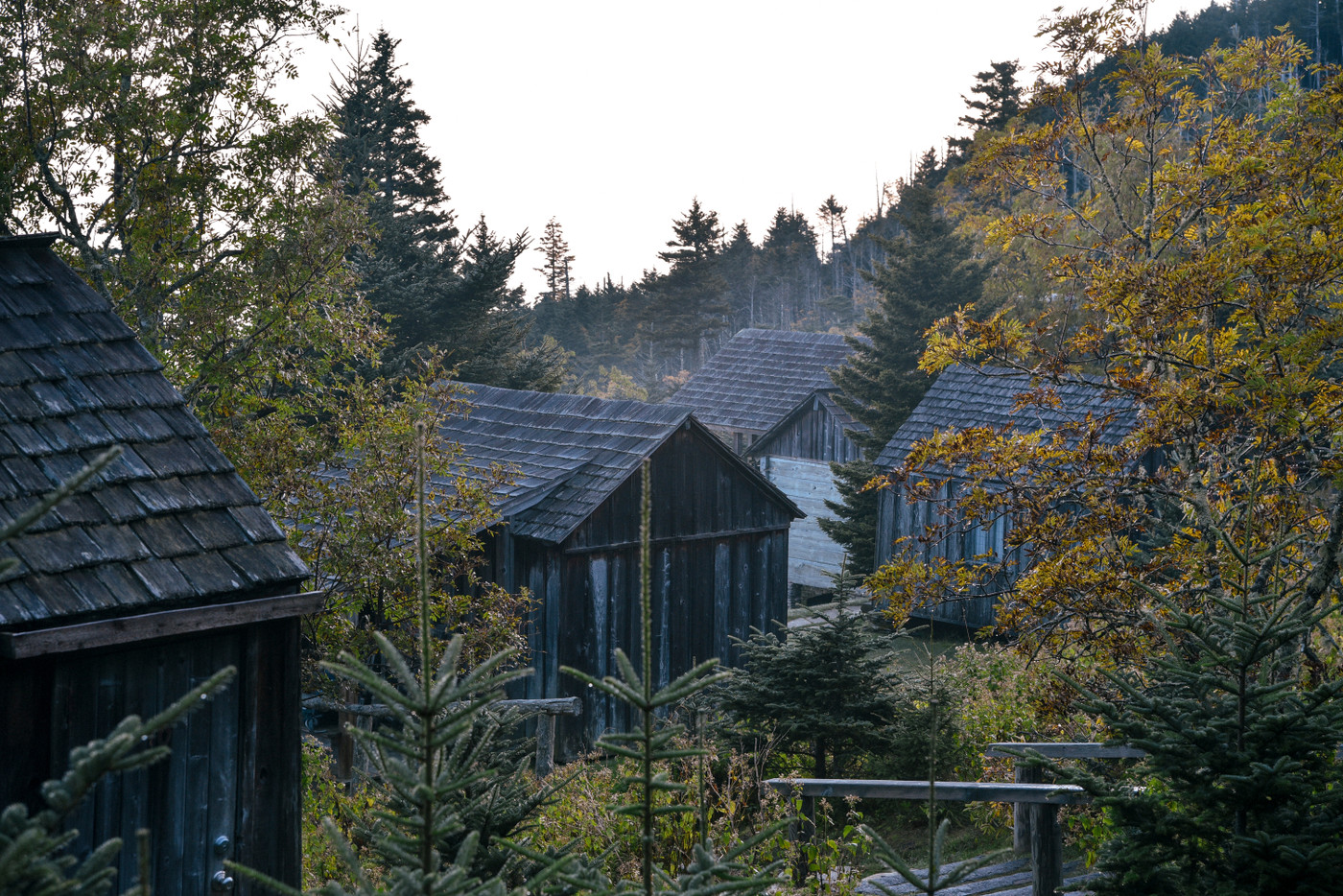
Mount Le Conte is a high-elevation peak located in Great Smoky Mountains National Park. With a summit elevation of 6,593 feet, Mount Le Conte is the third highest peak in the park. The mountain is a popular destination for hikers, with several trails leading to the summit. The summit of Mount Le Conte is home to a historic lodge, offering overnight accommodations and a dining room, making it one of the few places in the country where visitors can experience a true mountaintop retreat.
Ole Smoky Moonshine

Ole Smoky Moonshine is a popular distillery and tasting room located in Gatlinburg, Tennessee, near Great Smoky Mountains National Park. Visitors to Ole Smoky Moonshine can expect to experience an entertaining tour of the distillery, where they’ll learn about the process of making moonshine. The tour includes tastings of the various moonshine flavors, including traditional whiskey and fruit-flavored varieties. After the tour, visitors can browse the gift shop for souvenirs and purchase their favorite bottles of moonshine. The tasting room offers a lively atmosphere with live music, making it a great place to stop for a drink and bite to eat. With its rich history, entertaining tours, and delicious moonshine, Ole Smoky Moonshine is a must-visit destination for anyone interested in learning about and tasting traditional Appalachian moonshine in the Smokies.
Parrot Mountain and Gardens

Parrot Mountain and Gardens is a 4-acre botanical garden and aviary located in Pigeon Forge, Tennessee. This one-of-a-kind destination offers a serene and tropical escape from the natural beauty of the surrounding mountains. Visitors can walk through lush gardens and admire the numerous exotic and rare birds, including parrots, toucans, and flamingos. The aviary is designed to resemble a tropical jungle, complete with waterfalls and a tropical plant collection. Visitors have the unique opportunity to interact with the birds, some of which are trained to perch on their shoulders.
Cataloochee Ski Area
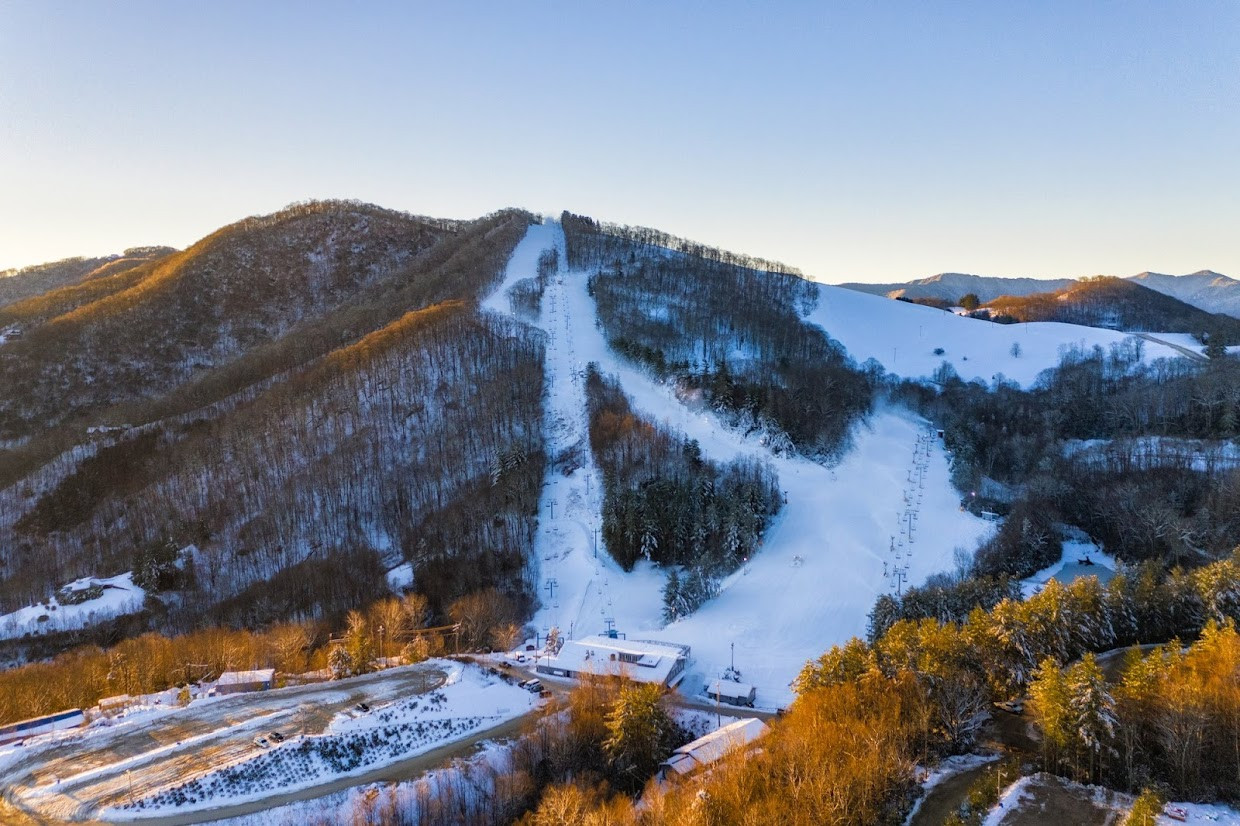
Cataloochee Ski Area is a ski resort located in the Great Smoky Mountains of North Carolina. This family-friendly ski area offers a variety of slopes for skiers and snowboarders of all levels, from beginner to expert. With a summit elevation of 5,400 feet, the ski area offers stunning views of the surrounding mountains and challenging terrain for thrill-seekers. On top of skiing and snowboarding, the ski area also offers snow tubing, making it a great spot for families. For both seasoned skiers to nervous newbies, Cataloochee Ski Area is a must.
Dollywood

Welcome to Dollywood! The park, which is named after country music legend Dolly Parton, offers a unique blend of thrilling rides, live entertainment, and down home Southern hospitality. With its mix of traditional amusement park rides, shows, and educational experiences, Dollywood has something for visitors of all ages. The park is located approximately 30 miles from the Great Smoky Mountains National Park Gatlinburg entrance, making it an easy and convenient day trip for park visitors. Whether you’re a fan of country music, amusement parks, or simply looking for a fun day out, a visit to Dollywood is a must while in the Great Smoky Mountains area.
Forbidden Caverns
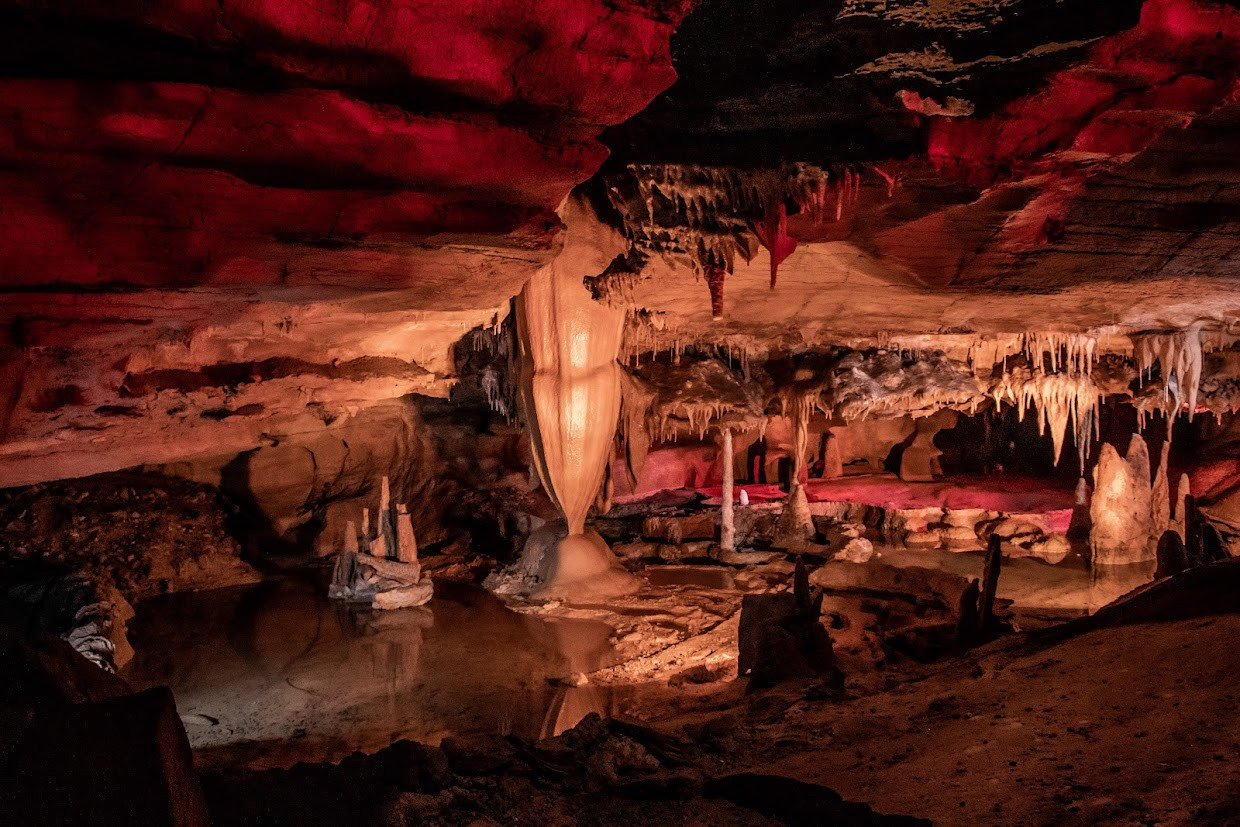
With over 8,350 registered caves in 2023, Tennessee is home to the highest number of caves in the US. This one-of-a-kind cave system offers visitors a chance to explore its stunning beauty, rich history, and geology. The tour takes visitors on a guided journey 200 feet underground with views of stalactites, stalagmites, and flowstone. Forbidden Caverns visitors will also learn about the history of the caves, including its use by the Cherokee Indians and its role in the moonshine industry.